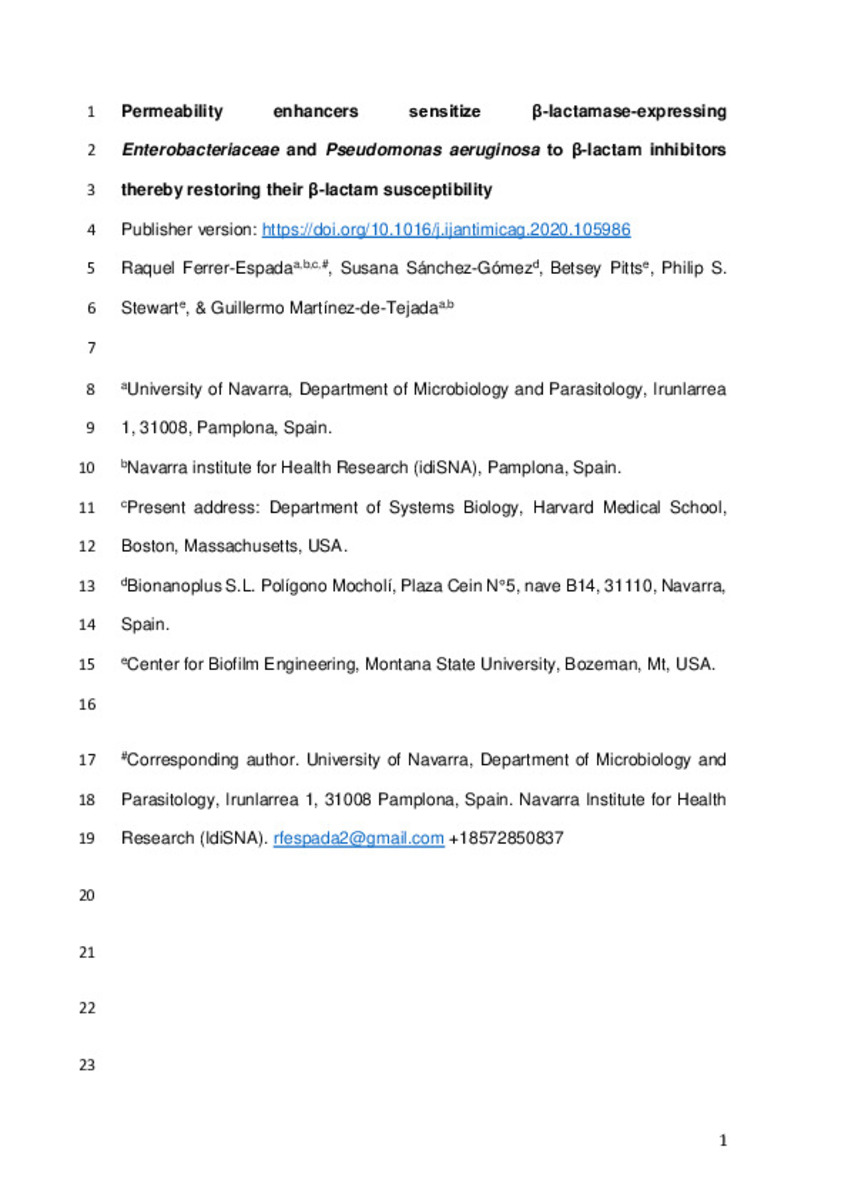Permeability enhancers sensitize β-lactamase-expressing Enterobacteriaceae and Pseudomonas aeruginosa to β-lactamase inhibitors, thereby restoring their β-lactam susceptibility
Keywords:
Biofilm
Escherichia coli
Klebsiella pneumoniae
Pseudomonas aeruginosa
Synergy
β-lactamase inhibitor
Citation:
Ferrer-Espada, R. (Raquel); Sánchez-Gómez, S. (Susana); Pitts, B. (Betsey); et al. "Permeability enhancers sensitize β-lactamase-expressing Enterobacteriaceae and Pseudomonas aeruginosa to β-lactamase inhibitors, thereby restoring their β-lactam susceptibility". International Journal of Antimicrobial Agents. 56 (1), 2020, 105986
Statistics and impact
0 citas en

Items in Dadun are protected by copyright, with all rights reserved, unless otherwise indicated.







